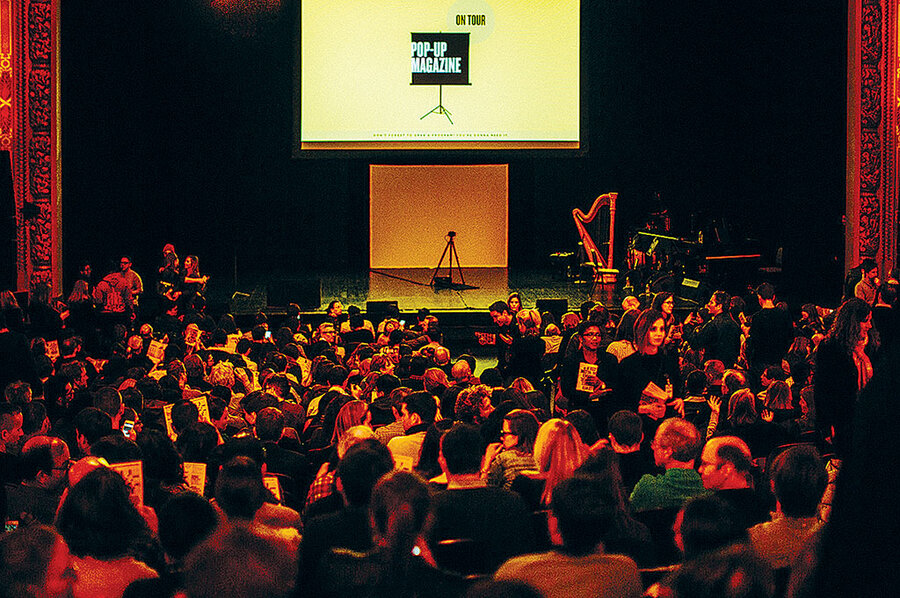Pop-Up Magazine brings journalism onstage
Loading...
Magazine content comes to life with Pop-Up Magazine, a traveling show that brings reporters onstage to deliver their stories live before an audience, complete with audio, video, and photography.
The Pop-Up Magazine production was recently staged in cities including Los Angeles and New York. At a Boston show, attendees sat at tables rather than on auditorium-style chairs and listened as journalists read stories about topics including how emojis get created and a Broadway singer who had fallen on hard times. Those involved in the show hang around after the program to interact with audience members.
Pop-Up Magazine was created in 2009. “Filmmakers have their film festivals,” says co-founder and editor-in-chief Douglas McGray, who has worked for legacy news outlets including “This American Life” and The New York Times Magazine. “And writers have their readings and photographers have their gallery events and we’re all in the story business, just in different ways. And I thought it would be interesting if we created something, a show that would mash together all these different worlds.”
As news outlets struggle for relevance in an ever-widening journalism landscape, many publications are experimenting with new ways to engage audiences, from live blogs to video chats on social media. Both Chicago Public Radio's "This American Life" and WNYC's Radiolab have put on one-off live performances that have been screened in movie theaters. Pop-Up Magazine takes that idea further, with participants embarking on a multi-city tour.
Audience members are obviously engaging with this, considering that shows now regularly sell out. Pop-Up Magazine participants include reporters who hail from legacy news outlets including New England Public Radio, The New Yorker, and The Atlantic.
The recent Boston show included what appeared to be a fairly wide-ranging audience in terms of age as well as a moment that couldn't be recreated on the page: the Broadway singer who was the subject of one story, Tim Blevins, coming out unexpectedly to perform the "Man of La Mancha" song "The Impossible Dream." Productions also include brief commercial-like breaks that center around sponsors of the show like Prius.
Those who work on Pop-Up Magazine are also behind the publication California Sunday Magazine, which debuted in 2014. But McGray says any content that’s experienced by Pop-Up Magazine audience members is new. He notes that occasionally, a story will be performed for Pop-Up Magazine and then “a different, longer version went in [California Sunday] Magazine.”
“Sometimes there’s so much stuff flying at us all day long,” Mr. McGray says of the Pop-Up Magazine shows. “You may only have 20 or 30 seconds of attention to read something on your phone and then it’s gone and maybe you remember it, maybe you don’t. We work really hard to make the show feel memorable. You sit down in a dark room with a lot of other people, you turn off your phone for 90 minutes, and you watch these stories.”








